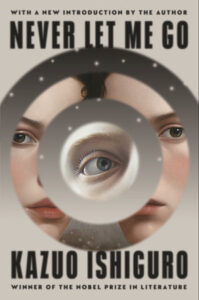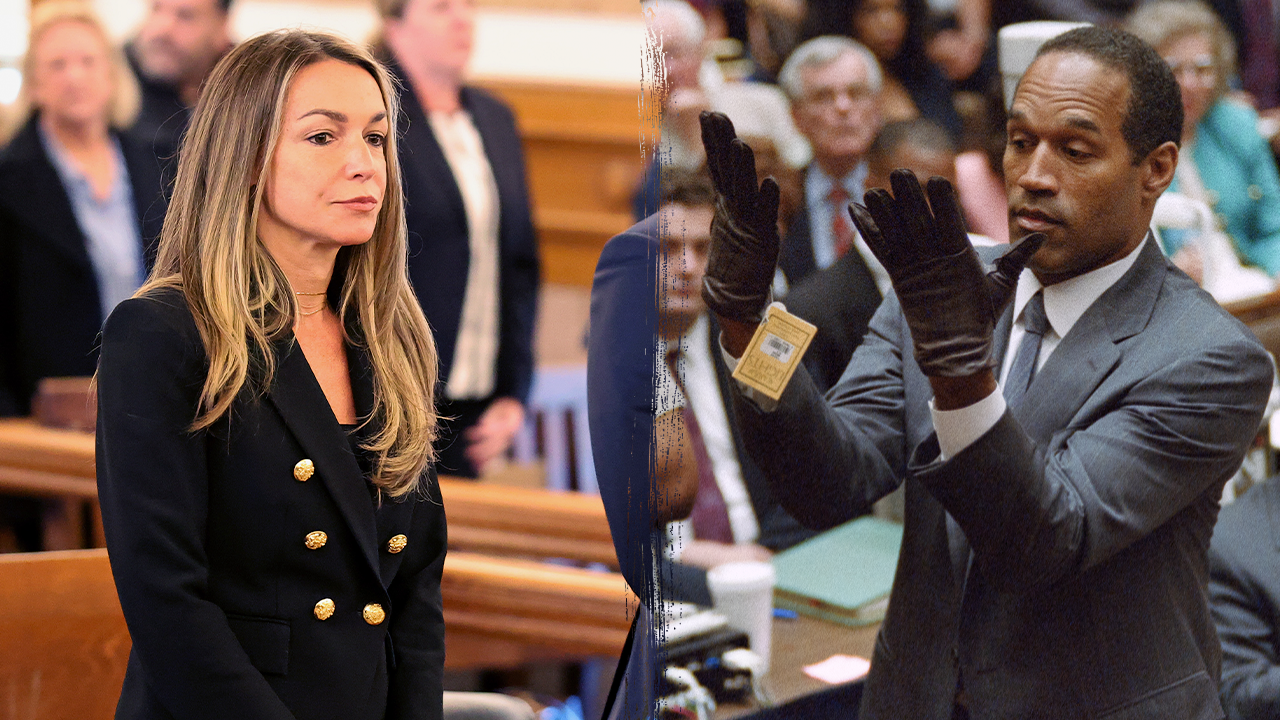While I’d been engaged penning my 4th and 5th novels, my study had mysteriously transformed itself astir maine into a benignant of miniature indoor jungle. Everywhere were dusty mountains of scribbled-on pages and precarious towers of folders. Article continues aft advertisement In nan outpouring of 2001, however, I began activity connected my caller fresh pinch renewed energy, having conscionable had nan room wholly refurbished to my ain exacting specifications. I now had well-ordered shelves up to nan ceiling and—something I’d wanted for years—two penning surfaces that met successful a correct angle. My study felt, if anything, moreover smaller than earlier (I’ve ever preferred to constitute successful mini rooms, my backmost to immoderate view), but I was immensely pleased pinch it. I’d show anyone willing really it was for illustration being ensconced successful nan sleeper compartment of a play luxury train: each I had to do was revolve my chair and scope retired a manus to get immoderate it was I needed. One specified point now readily accessible was a container record connected nan support to my near marked “Students Novel.” It contained handwritten notes, spidery diagrams, and immoderate typed pages deriving from 2 abstracted attempts I’d made—in 1990, past successful 1995—to constitute nan caller that was to go Never Let Me Go. On each juncture I’d abandoned nan task and gone connected to constitute a wholly unrelated novel. Not that I needed to bring down nan record very often: I was rather acquainted pinch its contents. My “students” had nary assemblage anyplace adjacent them, nor resembled astatine each nan benignant of characters encountered in, say, The Secret History aliases nan “campus novels” of Malcolm Bradbury and David Lodge. Most importantly, I knew they were to stock a unusual destiny, 1 that would drastically shorten their lives, yet make them consciousness special, moreover superior. But what was this “strange destiny”—the magnitude I hoped would springiness my caller its unsocial character? Article continues aft advertisement The reply had continued to elude maine passim nan erstwhile decade. I’d toyed pinch scenarios involving a virus, aliases vulnerability to atomic materials. I moreover dreamt up erstwhile a surreal series successful which a young hitchhiker, precocious astatine nighttime connected a foggy motorway, thumbs down a convoy of vehicles and is fixed a assistance successful a lorry hauling atomic missiles crossed nan English countryside. Despite specified flourishes, I’d remained dissatisfied. Every conceit I came up pinch felt excessively “tragic,” excessively melodramatic, aliases simply ludicrous. Nothing I could conjure would travel adjacent to matching nan needs of nan caller I felt I could spot dimly earlier maine successful nan mists of my imagination. But now successful 2001, arsenic I returned to nan project, I could consciousness thing important had changed—and it was not conscionable my study. * As a scholar and writer, I’d grown up nether nan power of nan assemblage lit courses of nan 1970s and nan London fabrication segment of nan 1980s. It was an breathtaking era of precocious literate ambition, characterized by an openness to world and postcolonial currents. But it was besides 1 hostile, astatine champion condescending, to immoderate useful that gave nan quality of deriving from a “popular” genre. Science fabrication successful peculiar seemed to transportation a mysterious stigma, and was conducted, successful imaginative and publishing terms, wrong its ain taste silo. Accordingly, I, for illustration galore of my peers, had ever steered clear of SF, believing it had thing to connection that could beryllium applicable to my creator ambitions. Article continues aft advertisement Then, successful nan precocious 1990s, I belatedly noticed I was nary longer a “young writer”—that location was a chopped and breathtaking caller procreation emerging successful Britain, typically 15 aliases truthful years younger than me. Some of these authors I publication and admired from a distance. Others became friends. For instance: Alex Garland (who’d past precocious published The Beach) and I began a pattern—still continuing today—of gathering for rambling, informal lunches successful North London cafés, and I soon noticed really he, without self-consciousness aliases posturing, often cited writers for illustration J.G. Ballard, Ursula K. Le Guin, and John Wyndham. It was Alex who drew up for maine a database of nan astir important schematic novels I had to read, introducing maine to nan activity of important figures for illustration Alan Moore and Grant Morrison. Alex was astatine that clip penning a screenplay that would go nan classical 2002 zombie dystopia movie 28 Days Later. He showed maine an early draught and I listened successful fascination to him discussing nan pros and cons of various ways forward. And successful nan autumn of 2000, during a coast-to-coast U.S. book tour, my itinerary intersected 3 times pinch that of a young English writer promoting his first novel. The caller was Ghostwritten and his sanction was David Mitchell—both astatine that constituent chartless to me. We recovered ourselves sitting successful late-night lounges of hotels successful nan American Midwest, chilling aft our respective events, competing to place tunes nan cocktail pianist was playing for us. Alongside chat astir Dickens and Dostoyevsky, I noted really he mentioned Ursula K. Le Guin, Rosemary Sutcliff, nan caller Matrix movie, H.P. Lovecraft, schlocky aged shade and scary stories, imagination literature. On returning location I publication Ghostwritten and realized I’d been communing pinch a monster talent (an appraisal that became much aliases little cosmopolitan erstwhile he published Cloud Atlas 3 years later). My increasing familiarity pinch these younger colleagues excited and liberated me. They opened windows for maine I’d not thought to unfastened before. They not only knowledgeable maine into a wider, vibrant culture, they brought to my ain imagination caller horizons. Article continues aft advertisement There mightiness person been different factors astir astatine that time: Dolly nan Sheep, history’s first cloned mammal, adorning nan fronts of newspapers successful 1997; nan penning of my 2 erstwhile novels (The Unconsoled, When We Were Orphans) making maine consciousness much sure-footed astir taking deviations from mundane “reality.” In immoderate case, my 3rd effort astatine “the Students Novel” went otherwise to before. I moreover had a benignant of “eureka” moment—though I was successful nan shower, not a bath. I abruptly felt I could spot earlier maine nan full story. Images, compressed scenes, ran done my mind. Oddly I didn’t consciousness triumphant aliases moreover particularly excited. What I callback coming is simply a consciousness of alleviation that a missing portion had yet fallen into place, and on pinch it a benignant of melancholy, mixed pinch thing almost for illustration queasiness. I went astir auditioning 3 different voices for my narrator, having each 1 narrate nan aforesaid arena complete a mates of pages. When I showed nan 3 samples to Lorna, my wife, she picked 1 without hesitation—a prime that concurred pinch my own. After that I worked, by my standards, beautiful quickly successful my refurbished study, completing a first draught (albeit successful horribly chaotic prose) wrong 9 months. I past worked connected nan caller for a further 2 years, throwing distant astir eighty pages from adjacent nan end, and going complete and complete definite passages. * Article continues aft advertisement In nan 20 years since its publication successful 2005, Never Let Me Go has go my most-read book. (In difficult income terms, it overtook rather quickly The Remains of nan Day contempt nan latter’s sixteen years caput start, Booker Prize win, and nan acclaimed James Ivory film.) The caller has been wide studied successful schools and universities, and translated into complete 50 languages. It has been adapted into a movie (with Carey Mulligan, Keira Knightley, and Andrew Garfield arsenic Kathy, Ruth, and Tommy—and a superb screenplay, appropriately, by Alex Garland); a Japanese shape play directed by nan awesome Yukio Ninagawa; a ten-part Japanese TV bid starring Haruka Ayase; and astir precocious a British shape play written by Suzanne Heathcote. This has meant that complete nan years I’ve been asked galore questions astir nan novel, not conscionable from a scope of readers, but from writers, directors, and actors wrestling pinch nan task of transferring this communicative into a caller medium. Reflecting connected these questions today, it occurs to maine that nan awesome mostly of them tin beryllium gathered into 2 wide categories. The first mightiness beryllium summarized by this question: “Given nan atrocious destiny that hangs complete these young people, why don’t they tally away, aliases astatine slightest show much signs of rebellion?” The 2nd group of FAQs is somewhat harder to characterize, but fundamentally comes down to: “Is this a sad, bleak book aliases is it an uplifting, affirmative one?” I’m not going to effort present to reply either of nan above, partially because I don’t wish to springiness spoilers successful an introduction, but besides because I consciousness rather content, moreover proud, that this caller should provoke specified questions successful readers’ minds. I will nevertheless make nan pursuing observation—which whitethorn perchance make greater consciousness aft you’ve vanished nan book. It seems to maine that these most-asked questions astir Never Let Me Go originate because of tensions concerning its metaphorical identity. Is this communicative a metaphor astir evil man-made systems that already beryllium today—or are successful imminent threat of existing—ushered successful by uncontrolled innovations successful subject and technology? Or, alternatively, is nan caller offering a metaphor for nan basal quality condition—the basal limits of our earthy lifespans; nan inescapability of aging, sickness, and death; nan various strategies we adopt to springiness our lives meaning and happiness successful nan clip we person allotted to us. It whitethorn beryllium some a spot and a weakness of this caller that it often wishes to beryllium some of nan supra astatine 1 and nan aforesaid time, thereby mounting definite elements of nan communicative successful conflict pinch 1 another. * Lastly: fto maine make a remark astir nan book’s title. “Never Let Me Go” is nan sanction of a opus made celebrated successful nan 1950s by Nat King Cole (written by Ray Evans and Jay Livingston). I wasn’t acquainted pinch it erstwhile penning nan novel. I happened to spot nan title written connected nan sleeve of a jazz album—pianist Bill Evans’s Alone—and was instantly drawn to it. Aside from its elemental elegance, what struck maine astir this title was nan sheer impossibility of what was being requested. “Please clasp maine for a agelong time” would beryllium reasonable. But if personification pleads “Never fto maine go,” they’re not only asking for nan impossible; they must know, moreover arsenic they make nan request, that they’re asking for thing beyond anyone’s gift. This was why I recovered these words truthful moving—why I wished to embed their poignance astatine nan bosom of my novel. Because location are times erstwhile we quality beings wish, from nan depths of our souls, for thing we cognize to beryllium beyond anyone’s reach. Over nan years, I’ve travel to recognize that it’s connected this territory—this no-man’s-land betwixt what we desperately yearn for and what we cognize to beryllium nan limits of nan possible—that I astir for illustration to activity arsenic a writer. __________________________________ From Never Let Me Go: Twentieth Anniversary Edition by Kazuo Ishiguro. Copyright © 2025. Available from Vintage Books, an imprint of Knopf Doubleday Publishing Group, a section of Penguin Random House, LLC.

 4 hari yang lalu
4 hari yang lalu









 English (US) ·
English (US) ·  Indonesian (ID) ·
Indonesian (ID) ·